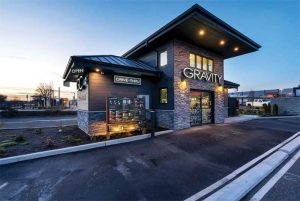
Installation
Brick and stone installations are quite labor-intensive since the products are heavy. Exterior brick and stone require a wider foundation wall to support their own weight and accommodate the code-required 25-mm (1-in.) air space. They also require steel support lintels over windows, doors, and gable-ends, as well as brick ties, through-wall flashings, and weep holes for water drainage.
Durability
Brick is a highly durable product, but it absorbs water and can spall when exposed to excess moisture. Depending on the brick’s water absorption rate and saturated coefficient, it can be affected by freeze/thaw cycles. Brick is also subject to efflorescence, or crystalline deposits of water-soluble salt on the brick’s surface.
Recycled content
Some bricks may contain pre-consumer recycled materials, such as overburden from mining, washings from aggregate processing, grog, sawdust, and metallic oxides. This pre-consumer recycled content is typically low, around 15 percent.
Composite cladding
Appearance
Composite cladding has an authentic wood grain and color variation that gives it an appearance similar to solid wood—but without the fading, cracking, and decay that is typical of wood cladding.
Installation
Installation is safer and easier than most other cladding options. Composite cladding is available in longer board lengths than wood or fiber cement, which reduces splices and labor. Since the boards are pre-finished, there are no extra finishing steps or excessive ongoing maintenance required, which further reduces labor time and expense. Unlike fiber cement, no potentially harmful substances are released during cutting.
Durability
Composite cladding will not crack, splinter, peel, rot, decay, or suffer insect infestation, like wood. Composite cladding may absorb a negligible amount of water, but is not affected by freeze/thaw cycles.
Recycled content
Composite cladding is made almost entirely of recycled content. It is manufactured without toxic chemicals and with zero wastewater. In addition, it can be recycled at the end of its life, unlike wood treated with chemicals, which cannot be burned or recycled at the end of its life.
Design benefits of composite cladding
Beyond its sustainability and performance attributes, composite cladding allows designers to provide the warm look of wood with a more durable material, while also staying on-trend with a mixture of exterior materials. While monolithic expanses of synthetic stucco (exterior insulation finishing systems [EIFS]), brick, wood, or fiber cement were once the norm, today’s buildings typically feature a combination of materials. Organic looking products with warm wood tones are now placed alongside poured-in-place concrete and glass or EIFS and stone. This is seen everywhere from single-family residences to commercial buildings, as it is a fast, simple solution for creating a great aesthetic virtually indistinguishable from newer buildings and adds an element of warmth.
WPCs can be used for many different components in the built environment, including decking, soffits, screen facades, rainscreen cladding, and even trim elements when cut to size. WPCs can also be manufactured in many different shapes, colors, and textures. Lengths and colors can be mixed and matched to create a unique, custom look, and boards can be installed vertically, horizontally, or diagonally. With these design options, architects can achieve a variety of styles, from subtle and rustic to bold and modern.





Fantastic insights into the future of sustainable construction! This article beautifully highlights the benefits of composite cladding in achieving zero waste and enhancing design sustainability. Well-written and inspiring.